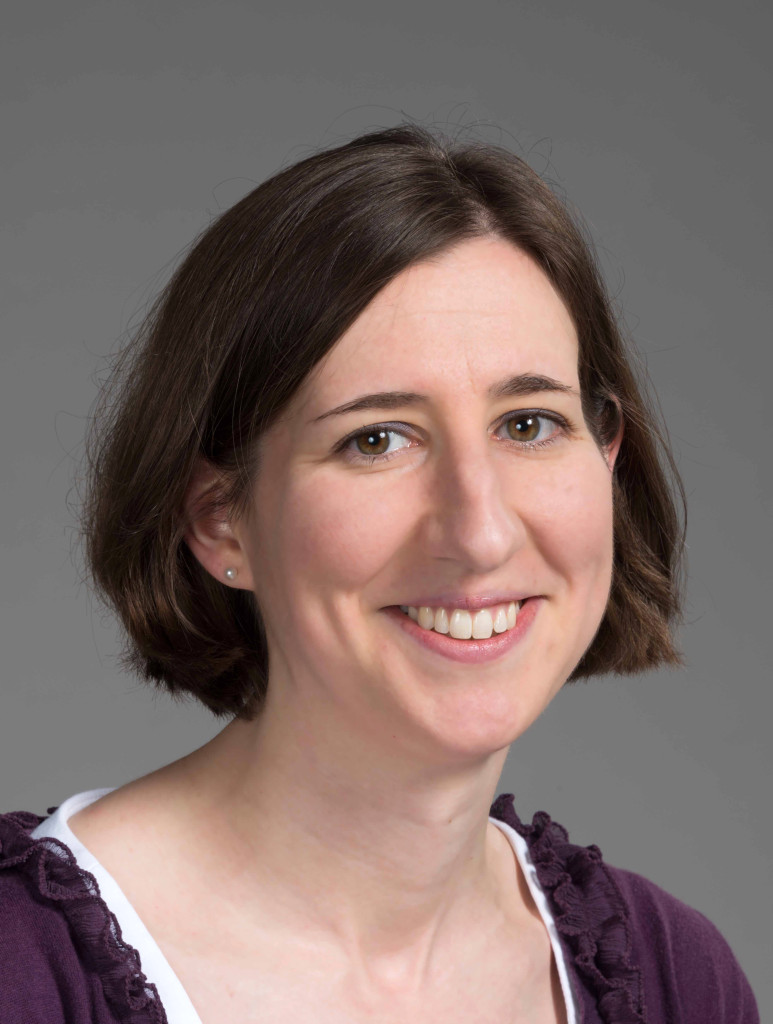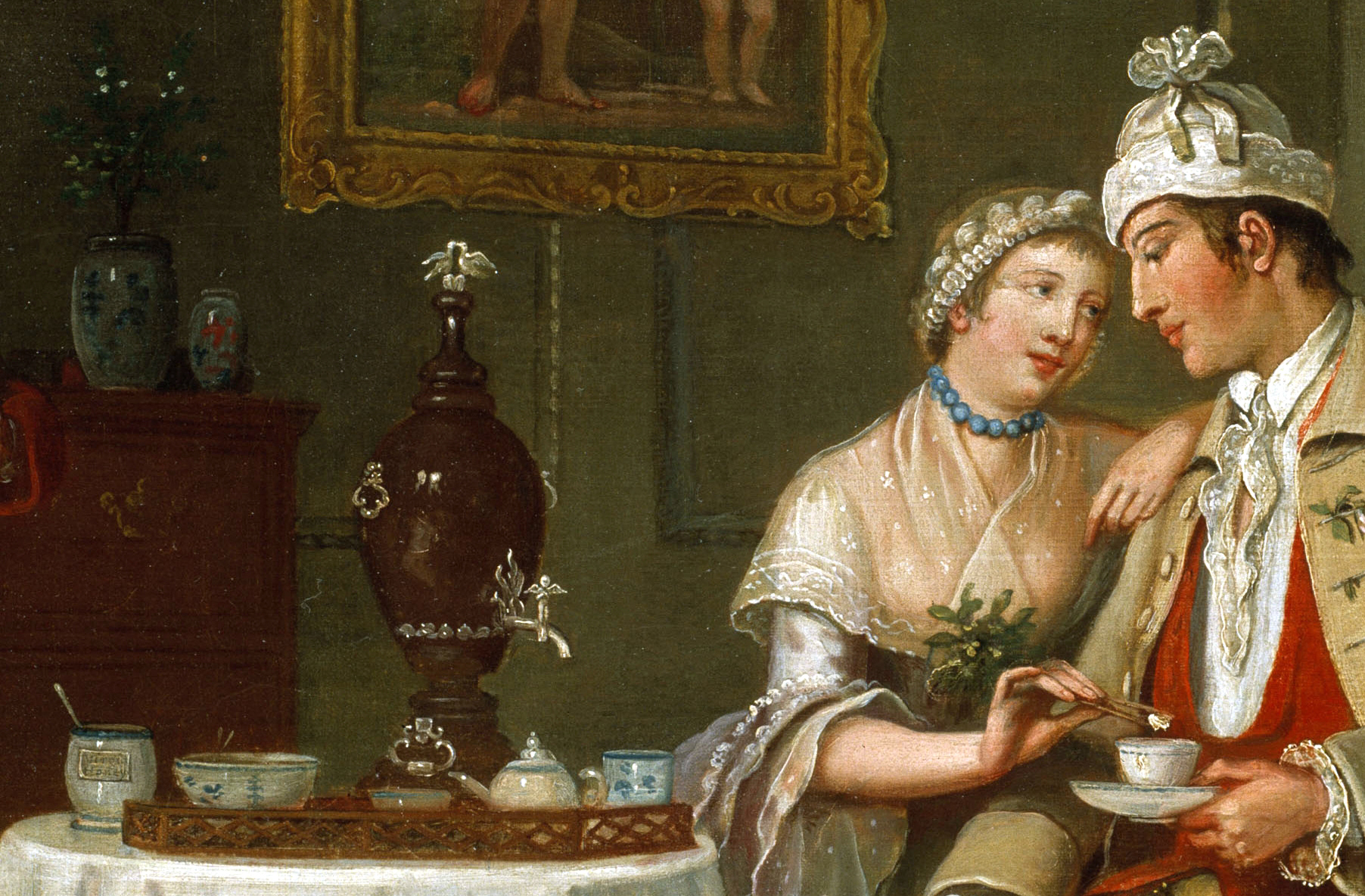
Angelika Kuettner is the associate curator of ceramics at Colonial Williamsburg. She began her career there ten years ago as a graduate student intern while enrolled in the American Studies program at the College of William and Mary, in Williamsburg. A native of Virginia’s Shenandoah Valley, she previously worked three years as the curatorial assistant at the Reeves Center at Washington and Lee University, home of the Reeves Collection of Chinese Export Porcelain.
How did your interest in ceramics develop?
After my introduction to ceramics from an art historical perspective at Washington and Lee, I became increasingly interested in how ceramics were used and displayed over time. It is mesmerizing how much history a single dish can convey! One aspect of my work at Colonial Williamsburg that I particularly enjoy is the seasonal changing of table settings throughout the historic area. A team of specialists including curators from many media, conservators and historic foodways experts collaborate to create seasonally appropriate, historically accurate table settings, complete with ceramics, glass, metals, textiles and even custom-made faux food.
What time period are you most interested In?
I love ceramics of all periods and, like many curators, I’m always most excited about whatever topic I’m currently working on. Because Colonial Williamsburg has the nation’s oldest historical archaeology program, hundreds of thousands of ceramic fragments have been recovered. This informs the choices we make about what Colonial Williamsburg collects and exhibits. In our historic area, we focus on the objects owned and used in Williamsburg and the early American South up to the Revolution. In the Art Museums of Colonial Williamsburg, the broader story of ceramics in the Anglo American world up to 1840 can be told.

Detail from “The Honeymoon” by John Collet, London, circa 1764; Colonial Williamsburg Collections, museum purchase. The painting shows a Chinese porcelain tea service with a ceramic jar, probably Chinese, being used as a planter. Paintings such as this will be discussed in Kuettner’s presentation at the New York Ceramics & Glass Fair, “Pictures Worth A Thousand Pots: Tracing Ceramics in Art.”
How do the archaeological findings influence your work?
Buildings in the historic area reflect people of widely differing economic circumstances, from slave quarters to farm sites to homes of wealthy merchants and up to the lavish furnishings of the Governor’s Palace. There are also taverns, stores and workshops of several tradesmen. Archeological finds often determine what we’ll include in a particular home, tavern or workshop. For example, ceramics on display in the Peyton Randolph house include intact examples of things that were recovered on that site or were listed in the inventories of family members. Objects now on display in Wetherburn’s Tavern reflect the items discovered on that site.
Introduce us to your talk “Pictures Worth A Thousand Pots: Tracing Ceramics in Art” that you will be presenting at the New York Ceramics & Glass Fair on January 19.
I am fascinated by early prints and paintings depicting ceramics in domestic life. Whether used as symbols of wealth and status, showing daily activities or serving as props, ceramics are featured prominently in art throughout time. I’ll trace ceramics through time by looking at the roles pottery and porcelain have played in paintings. It will be an exciting grand tour! Looking at prints and paintings is an important part of every curator’s job at Williamsburg. Coupled with the documentary and archaeological evidence, prints and paintings help us better interpret life in Colonial America. For me, it’s kind of like a ceramic-focused “Where’s Waldo?” I hope the talk will be an intriguing lecture for people of many interests. Learning to look for things is always fun.
Tell us about some of the projects you have been involved with in the past.
As an intern at Colonial Williamsburg, I compiled a glossary of white stone-glazed stoneware plate borders that was included in the publication Salt-glazed Stoneware in Early America and I was part of the team for an exhibition on the same topic. More recently, I wrote an article on Eighteenth Century Boston ceramic makers Benjamin Leigh and John Allman, who made tortoiseshell decorated creamware. Other projects have included a study of traditional methods of mending broken ceramics in the Eighteenth-Nineteenth Centuries. I’ve lectured several times on this topic, and an article will be included in the 2016 issue of Ceramics in America. Last year I had the privilege of participating in the Museum of Early Southern Decorative Arts (MESDA) Summer Institute – a fantastic study program focusing on material culture of the South. This past fall as part of the culmination of that study program I presented at MESDA my research on David Jarbour, a free black potter working in Alexandria, Va., in the Nineteenth Century. Currently, I’m finishing up an article on silver lusterware in America. I don’t know what topics might be tackled next, but there’s always something exciting and interesting!
-Rick Russack




